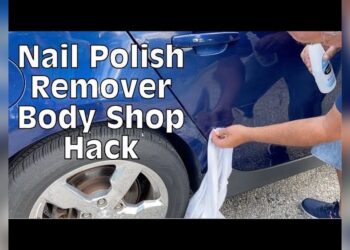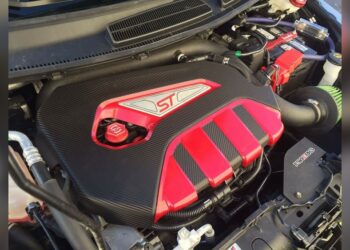When you’re working on a repair project, especially on your car or a household item, you might wonder: can Bondo get wet? This question is crucial because moisture can cause serious problems like rust, swelling, or the filler losing its grip.
If you want your repair to last and look great, you need to understand how Bondo reacts to water and what you can do to protect it. You’ll learn the truth about Bondo and moisture, why it matters for your project, and simple steps you can take to keep your repairs strong and dry.
Keep reading to avoid costly mistakes and make sure your work stands the test of time.

Credit: www.reddit.com
Bondo And Water Exposure
Bondo is a popular body filler used to repair dents and holes. Many wonder if it can get wet without damage. Understanding how Bondo reacts to water is key for lasting repairs. Water exposure affects the filler’s strength and durability. Let’s explore the details.
Porosity Of Standard Fillers
Standard Bondo fillers are made from polyester resin mixed with talc. This mix creates a porous surface that can absorb water. The tiny pores and pinholes allow moisture to seep in. Water trapped inside may cause swelling or weaken the repair. This porosity makes it important to seal the filler quickly.
Effects Of Moisture On Repairs
Moisture can cause the filler to lose adhesion to the metal. Trapped water may lead to rust forming under the repair. Rust pushes the filler off, causing bubbles or cracks. Over time, this damages the repair and requires redoing. Keeping the filler dry prevents these common issues.
Differences In Filler Types
Not all fillers react to water the same way. Fiberglass-reinforced fillers resist moisture better than polyester ones. These fillers are less porous and provide stronger protection. Some fillers include water-resistant additives for extra durability. Choosing the right filler helps avoid water damage and extends repair life.

Credit: www.reddit.com
Risks Of Moisture Absorption
Moisture absorption poses serious risks to Bondo and similar body fillers. These fillers are not fully waterproof and can soak up water over time. This moisture can cause damage beneath the surface. Understanding these risks helps protect your repair work and extends its life.
Water trapped under or inside the filler can create multiple problems. These include rust, swelling, and loss of durability. Taking steps to prevent moisture exposure is crucial for quality repairs.
Rust Formation Under Filler
Water can seep through small gaps or pinholes in the filler. This moisture then reaches the metal beneath. The metal reacts by rusting, which weakens the structure. Rust expands and pushes the filler up, causing cracks. Rust under filler is hard to detect until damage is severe.
Swelling And Bubbling Issues
Moisture causes filler to swell and lose adhesion. Bubbling appears on the surface as trapped air or water expands. This weakens the bond between filler and metal. Swelling can ruin a smooth finish and require redoing the repair. Early signs of bubbling mean water has compromised the filler.
Impact On Longevity Of Repairs
Absorbed moisture reduces the lifespan of any body filler repair. Constant exposure leads to repeated damage cycles. Rust and swelling worsen over time, making repairs fail faster. Proper sealing and drying prevent water damage and keep repairs strong longer.
Preparing Surfaces Before Application
Proper surface preparation is essential before applying Bondo or any body filler. It ensures better adhesion and prevents moisture problems later. Clean, dry, and stable surfaces help the filler perform well and last longer.
Neglecting surface prep can cause bubbles, rust, and filler failure. Follow steps to protect the metal and create a strong base. This section explains key preparation methods to improve results.
Priming Bare Metal
Bare metal must be primed before applying Bondo. Use an epoxy or etch primer for best protection. This primer forms a barrier against moisture and rust. It also helps the filler stick tightly to the metal.
Skip priming, and water can seep under the filler. This leads to rust and peeling. Apply primer evenly and let it dry fully before continuing.
Sealing Welds And Pinholes
Welded areas often have tiny holes or gaps. These pinholes allow water to enter behind the filler. Seal welds with a seam sealer on the backside of the panel. This blocks moisture from causing damage.
Inspect the metal surface carefully. Fill any pinholes or cracks to prevent rust and bubbles. A well-sealed weld improves filler durability.
Choosing Water-resistant Fillers
Standard polyester fillers absorb water and can swell or weaken. Consider using fiberglass-reinforced fillers instead. These products resist moisture better and last longer.
Water-resistant fillers reduce the risk of rust and filler failure. They are ideal for areas exposed to dampness or weather. Always check product labels for water resistance.
Protecting Cured Bondo
Protecting cured Bondo is essential to maintain its strength and appearance. Once the filler hardens, it remains vulnerable to moisture damage. Water can seep into the porous surface, causing swelling, cracking, or rust underneath. Proper protection extends the life of your repair and keeps the surface smooth and durable.
Applying Primer Over Filler
Applying primer over cured Bondo seals the surface and blocks moisture. Use a high-quality primer designed for body fillers. Spray or brush the primer evenly to cover all areas. Allow the primer to dry completely before sanding or painting. This step creates a strong barrier against water and improves paint adhesion.
Using Protective Paint Coatings
Protective paint coatings shield the cured filler from water and environmental elements. Choose automotive paint with water-resistant properties. Apply multiple thin coats for better coverage. Let each coat dry before applying the next. This layer prevents water from reaching the Bondo and stops rust from forming on the metal beneath.
Maintaining A Dry Work Environment
Keeping your work area dry is vital during and after applying Bondo. Moisture in the air can weaken the cured filler. Work in a well-ventilated, low-humidity space. Avoid exposing the repaired area to rain or damp conditions. Proper drying ensures the filler cures fully and remains protected against water damage.
Alternative Fillers For Moisture Resistance
Choosing the right filler for projects exposed to moisture is essential. Some fillers absorb water and weaken over time. Others resist water better and last longer. Exploring alternative fillers helps prevent damage from moisture. These options offer improved durability for wet conditions.
Fiberglass-reinforced Fillers
Fiberglass-reinforced fillers combine resin with fiberglass strands. This mix creates a tough, water-resistant surface. They bond well to metal and wood. These fillers do not soak up water like standard polyester fillers. Ideal for areas prone to moisture, they reduce the risk of swelling and rust underneath.
Epoxy-based Options
Epoxy fillers are known for their strong adhesion and waterproof qualities. They cure into a hard, non-porous layer that blocks water. Epoxy works well on metal, concrete, and fiberglass surfaces. These fillers resist cracking and shrinking. They maintain integrity in wet or humid environments.
Comparing Durability And Water Resistance
Fiberglass fillers offer good strength and moisture resistance. They are lighter and easier to sand than epoxy. Epoxy fillers provide superior waterproofing and durability. They adhere better to challenging surfaces and resist chemicals. Both types outperform traditional polyester filler in wet conditions. Choosing depends on the project’s needs and exposure to water.

Credit: www.lowes.com
Tips For Long-lasting Repairs
Ensuring that Bondo repairs last long requires careful attention during and after application. Proper care helps prevent moisture damage and keeps the repair strong. Follow these tips to enhance durability and avoid common issues with Bondo getting wet.
Avoiding Exposure To Humidity
Humidity can weaken Bondo and cause it to absorb moisture. Work in a dry environment to reduce this risk. Keep the repair area well-ventilated but away from damp air. Avoid applying Bondo on cold or moist surfaces. Finish the repair quickly to limit exposure to humid conditions.
Proper Sanding And Sealing Techniques
Sanding Bondo smooth creates a better surface for sealing. Use fine-grit sandpaper to avoid damaging the filler. After sanding, apply a high-quality primer to seal the surface. This primer blocks moisture from penetrating the Bondo. Proper sealing prevents swelling and cracking over time.
Storage And Handling During Repair Process
Store unused Bondo in a cool, dry place with the lid tightly closed. Avoid leaving it open to air or moisture. Handle mixed Bondo quickly because it hardens fast. Protect repaired parts from rain or water until fully cured and painted. These steps help maintain the repair’s strength and longevity.
Frequently Asked Questions
Does Car Body Filler Absorb Water?
Yes, standard polyester car body filler absorbs water, which can cause rust underneath. Use epoxy primer and seal filler quickly to prevent moisture damage. Fiberglass fillers resist water better.
Does Humidity Affect Bondo?
Humidity affects Bondo by causing moisture absorption, leading to swelling, bubbling, or rust under the filler. Seal Bondo quickly with primer to protect it.
Is All-purpose Bondo Waterproof?
All-purpose Bondo is not fully waterproof. It absorbs moisture, which can cause rust or swelling over time. Always seal and paint it promptly.
Does Bondo Hold Up Under Water?
Bondo, a polyester body filler, absorbs water and does not hold up well underwater. Seal it with primer and paint to resist moisture. Fiberglass-based fillers offer better water resistance.
Can Bondo Get Wet After It Cures?
Bondo can resist some moisture after curing but is not fully waterproof. Prolonged wetness may cause damage.
Conclusion
Bondo is not fully waterproof and can absorb moisture if left exposed. Protect bare metal with primer before applying Bondo. Seal the filler quickly with primer to keep water out. Using fiberglass fillers offers better water resistance than standard polyester types.
Keep the repair area dry until the final paint coats are applied. Taking these steps helps prevent rust and damage under the filler. Proper care ensures your repair lasts longer and stays strong.

















